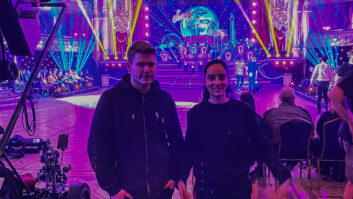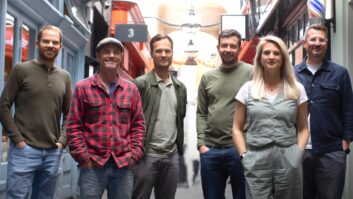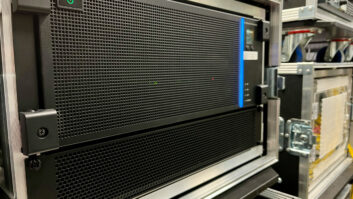Based in York, in the north of England, Viridian FX was founded nearly 15 years ago. In 2010, Thomas Mattinson and Kit Monkman began work on a 100 per cent VFX green screen feature, The Knife That Killed Me, with the usual limited funds available for an indie project. The solution, with some backing from Universal Pictures, was to create their own VFX team. With Nuke licenses supplied by Foundry, and supported by the University of York, Ben and five other recent graduates of the Post Production and Visual Effects Master’s degree (MA) were recruited.
With Monkman’s background in theatre, Mattinson’s film school beginnings, and head of studio / VFX supervisor Ben Louden’s passion for the craft of filmmaking, Viridian FX was formed once the film was complete.
“We’ve all come at it from very different directions, but I think it’s a product of those different experiences and backgrounds as a combination that really made Viridian FX what it is today,” says Mattinson.
Taking its name from the team’s green screen origins (Viridian is a shade of green), the studio balances high profile film and TV projects with smaller, more involved projects, with its showreel featuring HBO’s House of the Dragon and Netflix comedy drama Kaos alongside low-budget indie sci-fi and UK domestic TV drama. And while the Visual Effects Master’s degree that Ben and his colleagues completed no longer exists, Viridian is in talks to revive it.
What makes Viridian FX unique?
Viridian’s location in York makes it a strong alternative to the traditional post production hubs centred around London.
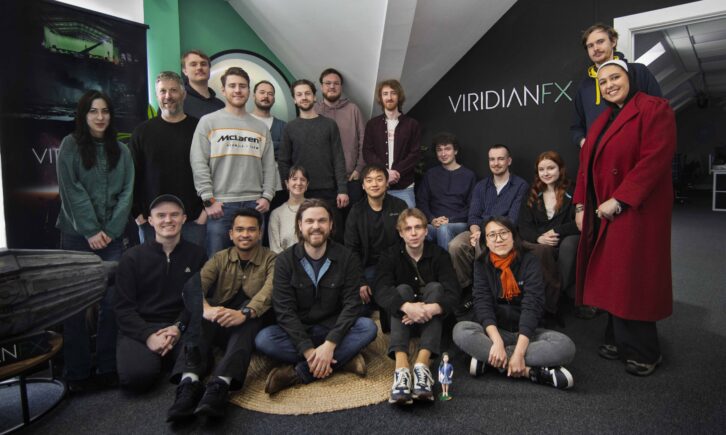
As well as helping to build the city’s position as a creative powerhouse, the studio supports a tight-knit team of local resident talent, rather than relying on freelancers. Instead, the 25-person team are full-time employees, including 12 VFX artists, plus a handful of supervisors, production managers, and producers.
“Everybody at the studio here knows each other so well that it makes us very nimble and reactive, and we bring a personal touch, from a client perspective,“ says Louden. “We also have very high staff retention.”
From students to studio with Nuke
The team has been using Nuke ever since their first project together at the University of York, and Nuke Studio is now an integral part of the Viridian FX pipeline. Viridian relies on Nuke for its ability to sit within a large pipeline when delivering long-form projects with large numbers of shots. The studio also cites Nuke’s regular and significant updates, and almost limitless customisation options, among its benefits.
“Nuke is not even a consideration. It just is,” says Louden. “Nuke’s node-based compositing makes it entirely different to other tools. It’s not just software, it’s the biggest toolbox you could ever imagine. There’s nothing you can’t do with Nuke, you just have to figure out.”
Building an efficient pipeline
Automation and speed are vital for a small company, and efficiency is a key driver when working with indie film budgets. Nuke Studio’s timeline tools help Viridian to stay on track, with the whole production management and editorial pipeline being built around Hiero.
“Delivering bespoke Nuke scripts to the artists within hours of shots landing in the studio is something that’s crucial to our workflow,” explains Louden.
“HieroPlayer is crucial for us when we’re doing heavy sequence-based work. Shots submitted through our internal publishing pipeline effectively appear in a folder in the right format, and the HieroPlayer timeline will then point to that folder so that any artist, at any point can see a live, up-to-date timeline of their work in context.”
Innovation with ViridianLAB
The team is constantly exploring innovative technologies under the ViridianLAB umbrella, in a conscious effort to maintain the experimental culture of its early days. Unsurprisingly, machine learning is a key area of interest and the team is already figuring out different ways to use Nuke’s CopyCat, such as using roto shapes to generate paint.
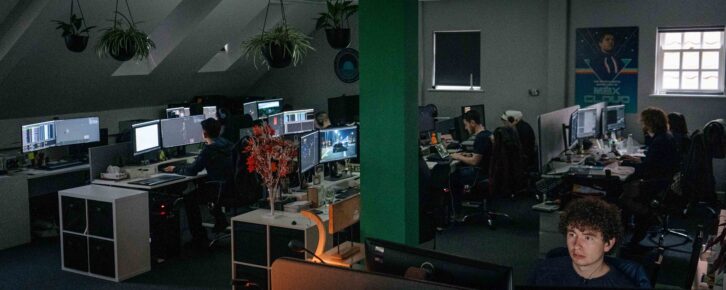
CopyCat is a machine learning toolset that enables artists to train their own models, with their own data, to create effects specific to the requirements of the project they’re working on.
On one project for the UEFA European Championships, the Viridian team used CopyCat across several thousand shots. With a large amount of green screen keying to complete, they were able to train a series of models to make their workflow more efficient.
Support for the next generation
While actively exploring new innovations, Viridian is also looking to the future in terms of fledgling artists. As well as lecturing at various universities and participating in school outreach, Viridian FX also takes part in the Aesthetica Short Film Festival, an international event that takes place annually in York.
What’s more, the team is hoping to support the revival of the University of York’s visual effects MA. The studio is currently in talks to create a brand new academy, which would be directly linked to the proposed MA’s work placement module. The idea is to recreate the kind of experimental culture that acted as a catalyst for the formation of Viridian FX, with three key benefits.
Monkman explains: “Firstly, it means we can create a VFX career pipeline for bright young people in the city, and build on York’s reputation as a centre of excellence. Secondly, it’s also an opportunity for our current staff to take a creative role in mentoring. And thirdly, it’s a way of developing experimental projects that can translate into IP for the studio.”
With talks already underway, the studio hopes to have the academy up and running in 12–18 months.
Advice for future VFX artists
So, what advice does the team have for aspiring VFX artists and students?
“The artists that do really well are the ones who ask questions, who are always willing to learn, and who can take feedback without taking it personally,” says Louden. “At university, you’re effectively your own director. But it’s important to understand that the industry is about creative problem solving, to a specific brief. It’s about interpretation, collaboration, and presentation of your ideas. And as you become more experienced and trusted, the collaborative becomes more creative.
“For students getting into VFX right now, it’s still 95 per cent about learning the software. And the best way to learn Nuke is just to keep using it.”
